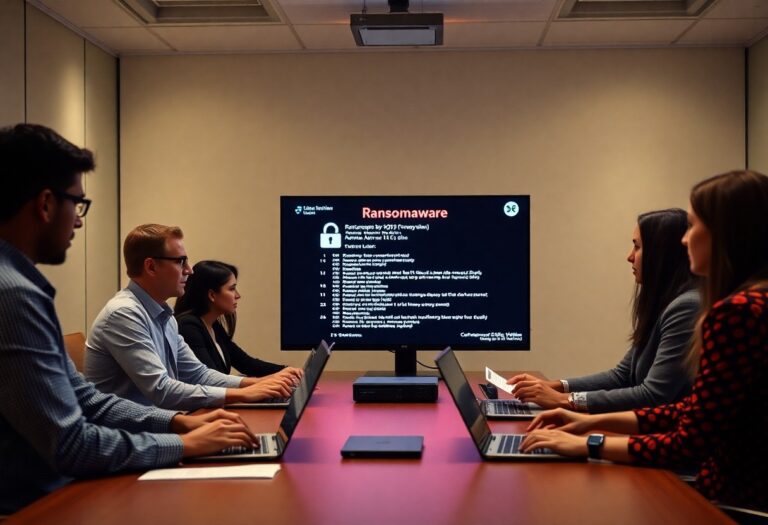“Startups Vulnerable, Enterprises Hardened: Asia’s Cybersecurity Gap”
The rapidly evolving threat landscape demands that organizations of all sizes, from agile startups to large enterprises, adopt robust cybersecurity strategies to tackle cybersecurity gaps. Alarmingly, the average attack breakout time has decreased to just 51 minutes, with the fastest recorded at only 51 seconds.
Understanding Cybersecurity Gaps
A cybersecurity gap refers to the disparity between an organization’s current defenses and the required optimal level. This is to effectively manage cyber risks. Such gaps expose businesses to serious threats, including data breaches, ransomware attacks, and unauthorized system access.
Types of Cybersecurity Gaps
- Technical Gaps: Outdated software, unpatched vulnerabilities, weak encryption, and insufficient Multi-Factor Authentication (MFA).
- Policy and Process Gaps: Inadequate or missing security policies, ineffective incident response plans, and poor access control procedures.
- Human Gaps: Insufficient training, weak password practices, and high susceptibility to phishing attacks.
- Compliance Gaps: Non-adherence to critical regulatory standards like GDPR, ISO 27001, and others.
- Visibility Gaps: Lack of clarity on data location, data flow, or network-connected devices.
Cybersecurity Challenges for Asian Startups
Asian startups encounter both global and region-specific cybersecurity challenges due to diverse regulations, limited awareness, and rapid technological adoption:
- Limited Cybersecurity Awareness: Many startups prioritize rapid market entry, overlooking fundamental cybersecurity practices, thus becoming vulnerable to phishing, ransomware, and data leaks.
- Budget Constraints: Security investments are frequently deemed non-essential at early stages, resulting in minimal spending on essential security tools, consulting, or dedicated personnel.
- Regulatory Complexity: Diverse data protection regulations across Asian countries (such as Singapore’s PDPA, India’s DPDP Act, China’s CSL) often create compliance confusion for startups operating regionally.
- Weak Cloud Security Practices: Reliance on cloud services like AWS, Azure, or Alibaba Cloud without appropriate security configurations, leading to vulnerabilities like misconfigured databases and exposed APIs.
- Lack of Incident Response: Absence of formal incident response or disaster recovery plans makes startups particularly vulnerable to prolonged downtime and reputational damage.
Cybersecurity Challenges for Asian Enterprises
Despite their relative maturity, Asian enterprises also face significant cybersecurity gaps influenced by legacy systems, fragmented regulations. This is apart from complex supply chains:
- Legacy Systems and Technical Debt: Enterprises, particularly in banking, telecom, and manufacturing, often depend on outdated or poorly integrated systems lacking modern security protections.
- Regulatory Fragmentation: Enterprises struggle with compliance due to Asia’s varied country-specific data protection laws, complicating unified cybersecurity management.
- Cybersecurity Talent Shortage: A severe shortage of skilled cybersecurity professionals often leads to overburdened in-house teams or reliance on outsourced security, resulting in compromised oversight and response capabilities.
- Supply Chain Risks: Extensive vendor networks, including SMEs with inadequate security measures, heighten the risk of unnoticed third-party breaches.
- Inconsistent Implementation: Uneven cybersecurity practices between corporate headquarters and regional branches leave gaps that can be exploited by threat actors.
Importance of Bridging Cybersecurity Gaps
Closing cybersecurity gaps between startups and enterprises in Asia is vital for reducing vulnerabilities, maintaining operational integrity, and fostering trust:
- Enhanced Interconnectedness: Enterprises and startups frequently interact through partnerships and supply chains. Weak cybersecurity in a startup can compromise the entire enterprise network, highlighting the critical need for comprehensive security.
- Rising Cyber Threats: The escalating threats in Asia—including nation-state cyberattacks, ransomware, and phishing campaigns—often target startups as entry points to infiltrate more secure enterprise networks.
- Economic Stability: Asia’s burgeoning digital economy relies heavily on innovative startups. Significant breaches in vital sectors (fintech, healthtech, logistics) could disrupt services and erode consumer and investor confidence.
- Regulatory Compliance: With tightening cybersecurity and data protection laws, bridging security gaps ensures seamless compliance across regional and international operations.
- Trust and Reputation Management: Enterprises risk reputational damage from security breaches involving partners or vendors, emphasizing the importance of cultivating a secure, trustworthy business ecosystem.
Conclusion
Addressing the cybersecurity gaps between startups and enterprises is not merely beneficial but essential for securing Asia’s broader digital ecosystem. By proactively closing these gaps, organizations can enhance economic stability, ensure regulatory compliance, and cultivate trust in an increasingly technology-driven marketplace.








